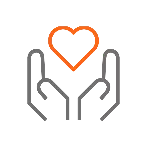What is asset tokenization?
Asset tokenization is the creation of a blockchain token to represent ownership of an asset. → data tokenization
What is augmented reality (AR)?
Augmented reality (AR) is an overlay of digitally generated content onto the real world. → virtual reality (VR), mixed reality (MR), extended reality (XR)
What is blockchain?
Blockchain is a form of distributed ledger technology (DLT) consisting of immutable records of asset ownership and associated transactions stored as “blocks” using a cryptographic hash function. → decentralized finance (DeFi)
What is a blockchain layer?
A blockchain layer is one of the three layers of a blockchain: a basic infrastructure layer 1; a performance enhancing layer 2; an application layer 3.
What is a blockchain token?
A blockchain token is a record of asset ownership on a blockchain either as a token native to a blockchain or as a result of asset tokenization on a blockchain. → utility token, governance token, non-fungible token (NFT)
What is a central bank digital currency (CBDC)?
A central bank digital currency (CBDC) is a digital currency provided by a central bank that may be a retail CBDC or a wholesale CBDC.
What is cloud computing?
Cloud computing is computing resources, such as data storage or processing power, available on-demand over the internet from a remote “cloud” location. → cloud elasticity, edge computing, private cloud, public cloud
What is cloud elasticity?
Cloud elasticity is the ability of a cloud computing provider to flexibly increase or decrease the provision of computing resources in response to customer need.
What is computer vision?
Computer vision is the use of artificial intelligence (AI), often applied to spatial computing, that lets computers interpret visual stimuli.
What is a consensus mechanism?
A consensus mechanism is a way to ensure trust between devices using distributed ledger technology (DLT) when validating transactions, such as proof of work or proof of stake when creating a new block on a blockchain.
What is a crypto asset?
A crypto asset is an asset whose ownership is recorded digitally as a blockchain token. → digital asset, virtual asset
What is cryptocurrency?
Cryptocurrency is a crypto asset designed as a digital currency with a native blockchain token and is secured using a cryptographic hash function (CHF). → stablecoin
What is a decentralized app (DApp)?
A decentralized app (DApp) is a software application that runs on layer 3 of a blockchain.
What is a decentralized autonomous organization (DAO)?
A decentralized autonomous organization (DAO) is an investment cooperative based on decentralized finance (DeFi) where voting rights are tied to investors’ governance token holdings.
What is a decentralized exchange (DEX)?
A decentralized exchange (DEX) is cryptocurrency exchange that allows anonymous trading by making a financial market automatically through a liquidity pool of invested assets and then accepting a trade via a smart contract.
What is decentralized finance (DeFi)?
Decentralized finance (DeFi) is a financial system that relies on a blockchain and its associated consensus mechanism to maintain trust rather than on intermediaries such as banks.
What is decentralized oracle network (DON)?
A decentralized oracle network (DON) is a network that prevents one centralized blockchain oracle from dominating the outcome of a smart contract.
What is a digital asset?
A digital asset is an asset that exists digitally and is sometimes also a crypto asset. → virtual asset
What is a digital currency?
A digital currency is a currency that exists only digitally, such as a cryptocurrency or central bank digital currency (CBDC). → electronic money (e-money)
What is distributed ledger technology (DLT)?
Distributed ledger technology (DLT) is a ledger, popularized by blockchain, that is decentralized across multiple trusted devices that share all updates among themselves and maintain consensus without the need for a centralized master ledger to maintain consistency.
What is double spending?
Double spending is the fraudulent addition of two blocks to a blockchain by using the same funds for separate transactions, which a consensus mechanism renders infeasible or disincentivizes.
What is edge computing?
Edge computing is the judicious deployment and use of hardware as close as possible to a requester of cloud computing services to improve efficiency.
What is elastic computing?
Elastic computing is an alternative term for cloud elasticity.
What is extended reality (XR)?
Extended reality (XR) is a catch-all term for augmented reality (AR), virtual reality (VR) and mixed reality (MR). → spatial computing
What is 5G?
5G is fifth-generation mobile network technology that can operate across low-band and medium-band frequencies like its predecessors while also adding high-band millimeter wave (mmWave) frequencies to allow for more connected devices in densely populated areas.
What is a governance token?
A governance token is a kind of utility token that grants voting rights in a decentralized autonomous organization (DAO).
What is a hybrid cloud?
A hybrid cloud is cloud computing that combines a private cloud, for more sensitive information, and a public cloud, for everything else, along with interconnections between the two clouds as needed.
What is immersive commerce?
Immersive commerce is an enhancement of the transactional dimension of online shopping with the experiential and interactive dimension of offline shopping through 3D rendering, extended reality (XR) and the metaverse.
What is the internet of things (IoT)?
The internet of things (IoT) is devices automatically sharing data with each other over private internet connections.
What is the internet of value (IoV)?
The internet of value (IoV) is the use of asset tokenization to enable the exchange of a financial asset or non-financial asset as a blockchain token over the internet. → web3
What is layer 1 of a blockchain?
Layer 1 of a blockchain is the basic infrastructure layer of a blockchain. → blockchain layer
What is layer 2 of a blockchain?
Layer 2 of a blockchain is a performance enhancing layer for off-chain or sidechain transactions on a blockchain. → blockchain layer
What is layer 3 of a blockchain?
Layer 3 of a blockchain is an application layer for decentralized app (DApp) integration on a blockchain. → blockchain layer
What is the metaverse?
The metaverse is a network of shared, immersive virtual worlds where users interact as avatars in 3D for social, economic and gamified utility. → web3
What is millimeter wave (mmWave) frequency?
Millimeter wave (mmWave) frequency is high-band electromagnetic frequencies that can carry large amounts of data over short unobstructed distances, which are used as one component of 5G via multiple smaller antennas in key locations.
What is mixed reality (MR)?
Mixed reality (MR) is often synonymous with augmented reality (AR) but sometimes differentiated by a greater level of interaction with the overlaid content. → virtual reality (VR), extended reality (XR)
What is a non-fungible token (NFT)?
A non-fungible token (NFT) is a blockchain token representing ownership of a unique or rare asset that cannot be transacted in a like-kind exchange.
What is a blockchain oracle?
A blockchain oracle is an interface that provides dynamic off-chain inputs, such as financial market data or supply chain events, to a smart contract on a blockchain.
What is a permissioned blockchain?
A permissioned blockchain is a blockchain that is available to users who meet criteria determined by a central authority.
What is a permissionless blockchain?
A permissionless blockchain, also known as a public blockchain, is a blockchain open to the public. → permissioned blockchain, private blockchain
What is a private cloud?
A private cloud is cloud computing offered solely to an organization or a group of member organizations, which may be managed and hosted internally or externally. → public cloud, hybrid cloud
What is a private blockchain?
A private blockchain is a blockchain that only allows known devices to operate.
What is proof of stake?
Proof of stake is a consensus mechanism whereby a device on a blockchain stakes on-chain collateral when creating a new transactional block, which requires a financial commitment that disincentivizes double spending. → proof of work
What is proof of work?
Proof of work is a consensus mechanism whereby a device on a blockchain must correctly guess a cryptographic hash to create a new transactional block, which is so computationally onerous that double spending is infeasible. → proof of stake
What is a public cloud?
A public cloud is cloud computing offered publicly either as a free service or as subscription. → private cloud, hybrid cloud
What is a public blockchain?
Public blockchain is an alternative term for permissionless blockchain.
What is quantum computing?
Quantum computing is the replacement of the standard binary bit of zero or one in computing with a quantum bit known as a qubit.
What is a qubit?
A qubit is an abbreviation of quantum bit used in quantum computing that goes beyond a conventional bit of zero or one to operate as zero and one simultaneously for faster calculations.
What is a retail CBDC?
A retail CBDC is a central bank digital currency (CBDC) used for retail transactions by the general public. → wholesale CBDC
What is a smart contact?
A smart contract is a code in layer 3 of a blockchain that self-executes an agreement between parties when certain events happen, such as the creation of a blockchain token or its transfer to a new owner.
What is a solid pod?
A solid pod is social linked data (solid) through a personal online data (pod) store that gives individuals control over the sharing and use of their data in a decentralized vision of the internet as web 3.0.
What is spatial computing?
Spatial computing is a way for humans to interact and collaborate with machines using artificial intelligence and computer vision to create and blend virtual experiences in the physical world. → extended reality (XR)
What is a stablecoin?
A stablecoin is a cryptocurrency pegged to a stable asset, such as a fiat currency.
What is tinyML?
TinyML is small-scale machine learning built into devices connected to the Internet of Things (IoT).
What is a utility token?
A utility token is a blockchain token that grants privileged access to product and services as an organization-specific currency that may overlap with reward points in a points-based loyalty program. → governance token.
What is a virtual asset?
A virtual asset is functionally a synonym for crypto asset but technically a synonym for digital asset.
What is a virtual asset service provider (VASP)?
A virtual asset service provider (VASP) is a financial institution that enables virtual asset storage and usage.
What is virtual reality (VR)?
Virtual reality (VR) is a digitally generated artificial world. → augmented reality (AR), mixed reality (MR), extended reality (XR)
What is web3?
Web3 is a third generation of the internet based on decentralized notions of user-owned content after the user-generated content of web2 and the passive content of web1, which is nowadays commonly associated with blockchain but originally referred to the solid pod concept sometimes differentiated as web 3.0. → internet of value (IoV), metaverse
What is web 3.0?
Web 3.0 is often a synonym for web3, but it is sometimes differentiated as decentralization through a solid pod rather than blockchain.
What is a wholesale CBDC?
A wholesale CBDC is a central bank digital currency (CBDC) used for fund transfers between financial institutions. → retail CBDC










